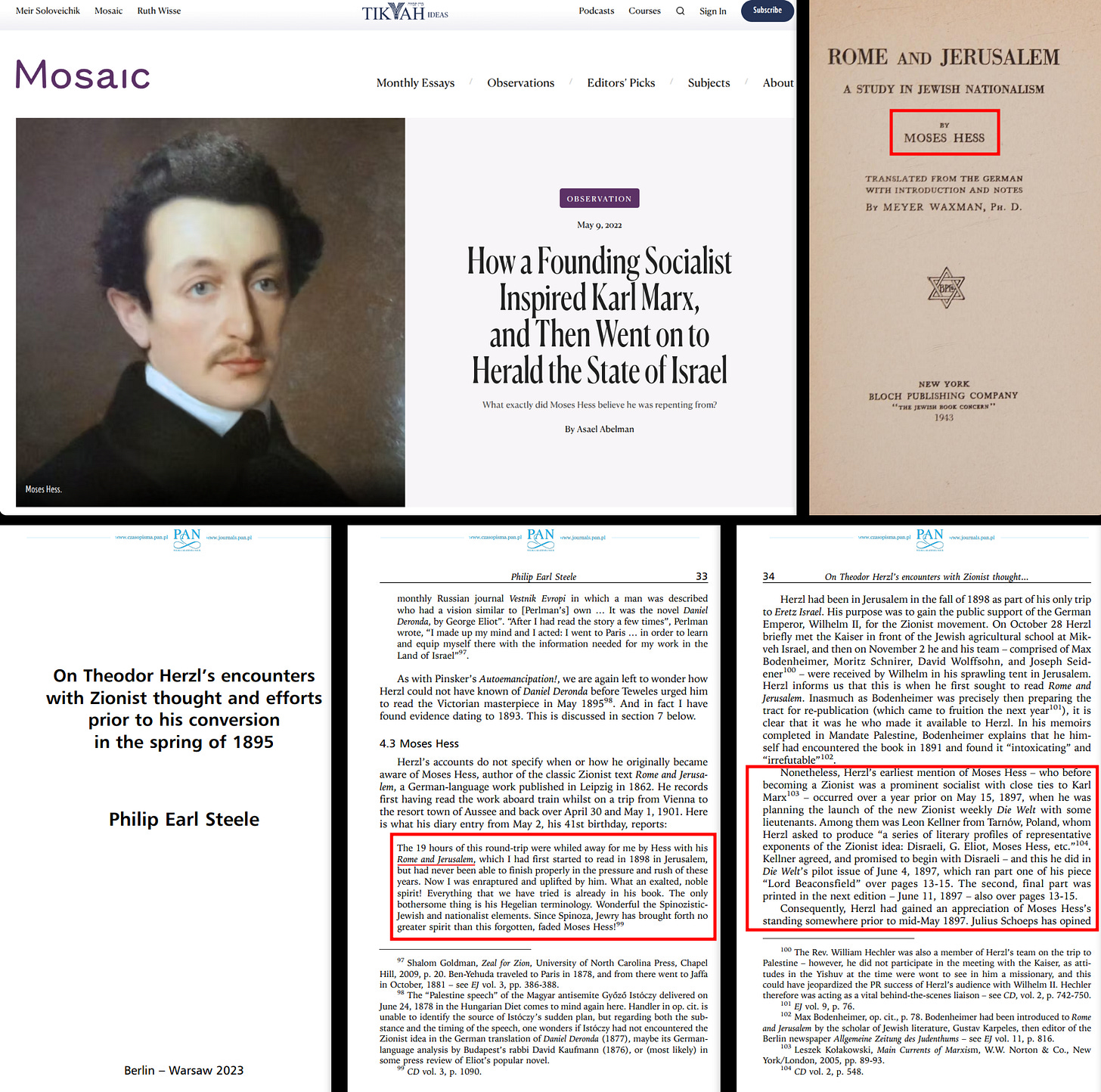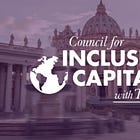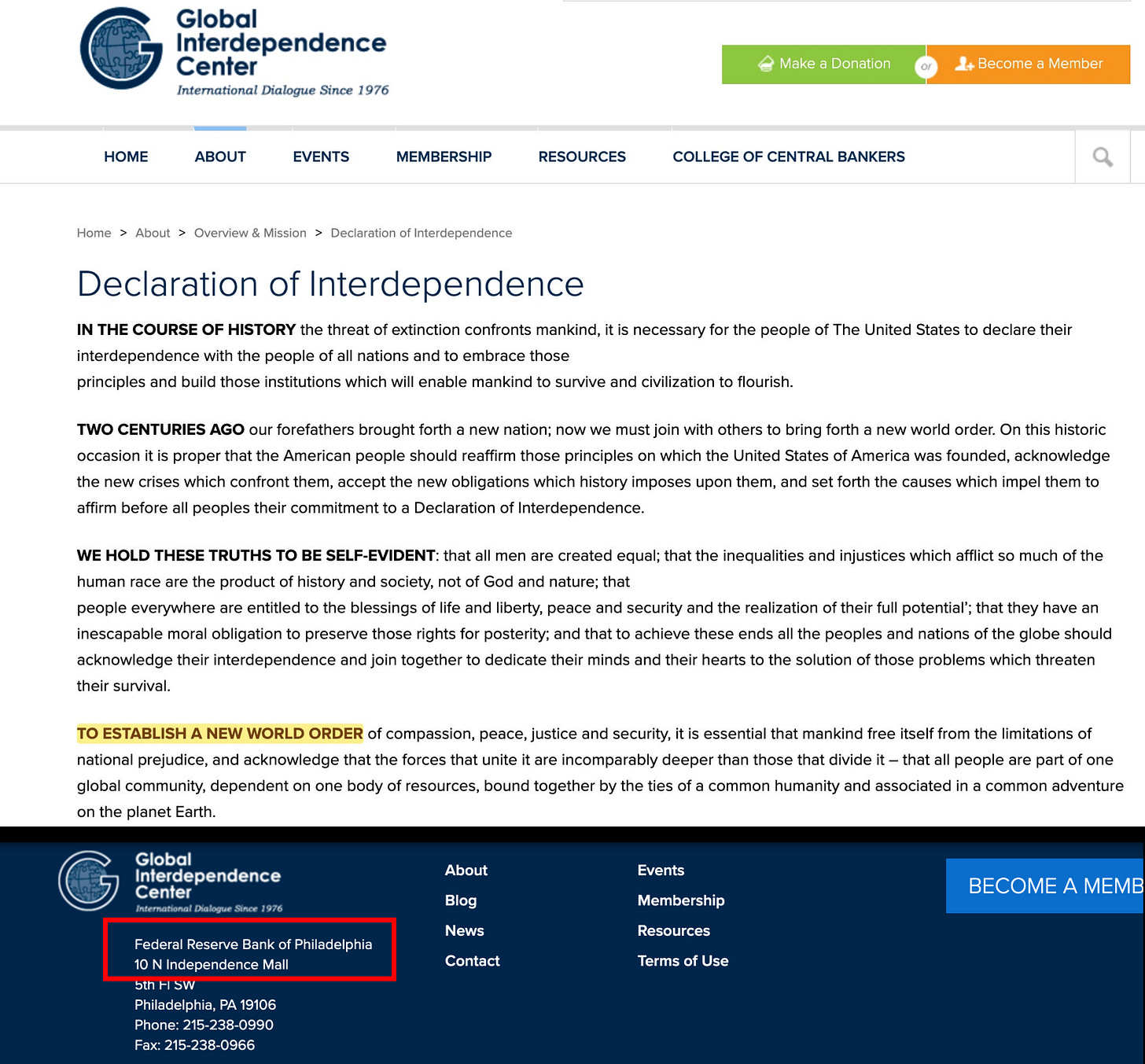Conditional Sovereignty - Part 2
The Hessian Bargain
What began as technical proposals for monetary coordination in the 1890s has evolved into a comprehensive system in which finance itself — at every level from planetary institutions to individual transactions — operates through conditionality.
This is all to support a vision pivoting on a belief that international social justice can be achieved through economic administration. A vision which has guided the progressive development of global economic governance.
The Public-Private Partnership and the Central Bank as Mediator
The intellectual genealogy begins with Julius Wolf’s 1892 proposal, Sozialismus und kapitalistische Gesellschaftsordnung1. Wolf presented an international monetary clearing mechanism resting on gold certificates designed to stabilise exchange rates — but more fundamentally, to mediate between economic classes through a shared unit of account. His proposal was structural: a public-private partnership joining sovereign governments, central banks, and private financial institutions into a cooperative clearing union. The public sector would provide legitimacy and legal standing; the private sector would provide operational capacity and credit mechanisms.
Wolf’s system operated through central banks as the mediating organ — neither purely capitalist nor socialist, but a functional intermediary supposedly aligned with social harmony and economic efficiency. The central bank would become the mediator between capital and labor, channeling credit, managing liquidity, and coordinating settlements in ways that tempered class conflict. This was more than technical adjustment — it was a philosophical intervention: Wolf aimed to transcend class antagonism by embedding social objectives into monetary architecture itself. Rather than abolishing capitalism, the system would discipline it through centralised coordination — a forerunner to later Keynesian, corporatist, and technocratic models.
The proposal received influential support: Alfred de Rothschild was present at the 1892 conference and delivered a speech voicing strong support for the Bank of England clearinghouse model as the template for international monetary coordination2. This endorsement from the heart of international finance signaled that Wolf’s vision of central bank mediation was not merely academic theory but had backing from those who controlled capital flows.
Wolf’s 1892 design anticipated the Bank for International Settlements (established 1930), Keynes’s Bancor proposal (1944), and modern central bank coordination via the IMF and Special Drawing Rights. The template was clear: achieve social harmony through economic administration mediated by neutral monetary institutions.
Social Justice Through Cooperatives and State Credit
Eduard Bernstein took Wolf’s clearing and public-private partnership logic and applied it domestically in the context of social justice and cooperative enterprise. In his 1899 work Evolutionary Socialism3, the Marxist revisionist Bernstein argued for a non-revolutionary path: extending democratic rights and welfare measures could incrementally transform society. His approach held that political action was valuable insofar as it furthered economic justice: ‘Truth, justice and morality shall rule the relation of the societies and individuals without regard to colour, creed or nationality’4.
Bernstein’s practical mechanism was the expansion of cooperatives, trade unions, and municipal enterprises — a mixed economy where public rules would govern private and collective production. The key lever was credit: expand the cooperative and municipal sector through cheap, elastic credit shaped by central bank discount policy, public banks, and legal privileges that lowered funding costs. Where Wolf had proposed international clearing, Bernstein deployed the same logic at the national level — using state-backed credit policy and central bank mediation to tame capitalism without overthrowing it.
This was not mere reform but reorganisation: economic relations would be restructured through institutions that reconcile labor and capital within a managed monetary framework. Cooperatives would grow in tandem with legislative reforms, public ownership of key industries, and expansion of social welfare — all financed through conditional access to credit mediated by the state and central bank.
Cooperative Guild Socialism at the Local Level
Arthur Penty, writing in the context of the Fabian Society in 1906, localised Bernstein’s vision into cooperative guild socialism5. Where Bernstein had emphasised national-level mixed economy, Penty proposed productive enterprises organised as local producer cooperatives (guilds) by craft and industry. The state and municipality would set the legal and monetary framework — standards, utilities, land policy — while guilds would run production and negotiate distribution.
Credit mediation remained decisive: growth and coordination would rely on public and municipal credit, with central bank policy tilting the field toward guild cooperatives over speculative capital. This was the Wolf-Bernstein synthesis brought to the local level: a framework where production is run by local cooperative guilds, municipalities set the rules, and public credit channels finance toward the cooperative sector. Democratic corporatism replaced both capitalist hierarchy and state socialism with functional representation by producers and civic bodies.
National Guilds and Unions as Economic Infrastructure
GDH Cole scaled Penty’s local guild concept to the national level in the 1910s-1920s6. His vision: industries run by national producer cooperatives (‘national guilds’) built on and alongside industrial unions, not parish-level cooperatives. The structure would feature dual democracy — a National Guild Congress7 representing producers and unions, balanced by consumer and municipal councils, coordinating prices, quality, and investment.
Critically, the state would own capital while guilds would operate industries under public charters and performance rules. Investment and expansion would be routed through public credit and central bank-steered finance, ensuring that guild priorities — employment, standards, social need — would anchor capital allocation.
This extended the Wolf → Bernstein → Penty lineage into a national clearing and credit constitution: functional self-management at national scale, mediated by monetary policy.
Functional Internationalism and the Siphoning of Sovereignty
Leonard S. Woolf took Cole’s guild logic and scaled it internationally through what he called International Government8. Rather than a single world state, Woolf envisioned a lattice of specialised international authorities — for trade, transport, finance, labor, health, communications, standards — that would administer functions across borders. This was de facto federalism through agencies.
The mechanism of power transfer was explicit: free trade commitments and open borders policies would require harmonisation of economic law — company law, banking regulation, labor standards, competition policy, shipping, communications. As states aligned to maintain market access, sovereign discretion would migrate upward to rule-making bodies. The enforcement mechanisms would be non-military: sanctions, blacklists, technical standards, international clearing and credit coordination, and best of all, cross-border economic necessity — anticipating central bank cooperation and later BIS/IMF-style oversight.
Woolf’s functional agencies would embed guild and union principles as international functional representation — corporatist governance at world scale. The political economy aim was clear: authority seeps from parliaments to technocratic bodies through functional agencies, free trade commitments, and legal harmonisation — an administrative federation governing markets first and nations second.
Institutionalising the Blueprint
Alfred Zimmern codified Woolf’s functional internationalism into the League of Nations blueprint. The League would operate through a permanent secretariat plus commissions for mandates, health, economics and finance, and communications — running cross-border functions rather than grand politics. Legal harmonisation would occur via standards: embedding coordination of labor, trade, transit, public health, and statistics into League work programs, shifting practical sovereignty to expert organs.
1919 saw the ecosystem appear with remarkable speed:
International Labour Organization (ILO) — tripartite corporatism (state-employer-labor) as internationalised guild logic
International Research Council — standardising science and data for governance (later to become the International Council for Scientific Unions outside of government influence)
League of Red Cross Societies — mass humanitarian and health coordination
The League’s architecture represented functional agencies plus legal harmonisation plus expert rule — Woolf’s playbook made institutional. The speed of formation demonstrated how rapidly international bodies could move to siphon usable power from states.
When the League later gave way for the United Nations, it represented a continuation of the same policies, with agencies and organisations continuing under the United Nations banner with minimal changes.
Commonwealth and Economic Governance
In 1926, through his lectures published as The Third British Empire9, Zimmern explicitly reframed the British Empire as an evolving British Commonwealth. This aligned with the 1926 Imperial Conference and Balfour Declaration10, which declared Dominions ‘autonomous and equal in status’ — a constitutional pivot from hierarchy to commonwealth association.
Zimmern’s intervention was not merely constitutional but programmatic: the Commonwealth should be guided by international social justice through economic administration. This meant building standards-making and functional agencies — for labor, finance, communications, health — to harmonise law and policy across members. Bodies like the ILO, founded in 1919, had already planted the banner of ‘social justice’. Zimmern cast the choice as one between egalitarian association through economic coordination and racial imperial hierarchy — arguing for the former operationalised through economic rules and institutions, with colonialism serving a functional example of the latter.
This was the explicit articulation: social justice advanced by economic governance and legal harmonisation through functional agencies. The moral end embedded in administrative means.
Wolf’s Central Bank Realised
In 1930, Julius Wolf’s 1892 vision materialised: the Bank for International Settlements was created under the Hague Agreements and Young Plan11 (January 20, 1930) as a central bank for central banks. Initially founded to manage reparations, the BIS quickly became the institution for central bank cooperation — the ‘international central bank’ Wolf had envisioned.
The BIS embodied Wolf’s original design principles:
A hybrid legal form (company under Swiss law with public-international immunities)
Voting rights reserved to central banks — a public-private clearing node run by central banks (though with initial rules also granting industry a voice)
Operating as a supposedly neutral mediator for cross-border settlements and policy coordination
The BIS exported the Bank of England’s template of politically autonomous central bank coordination to the international level, championed by BoE Governor Montagu Norman. Wolf’s 1892 proposal — an international, central bank-run clearing institution operating as mediator between capital and labor, public and private, national and international — became operational reality.
Building the Toolkit
On September 21, 1931, the United Kingdom left the gold standard12, allowing sterling to float and opening the door to activist monetary management — ‘cheap money’ policy. This rupture created space for entirely new approaches to monetary and fiscal policy.
The Royal Institute of International Affairs mapped the path forward through three critical reports:
1931: The International Gold Problem13 — foundational analysis of gold’s role and alternatives
1933: Monetary Policy and the Depression14 — spelling out monetary responses under suspension (proto ‘managed currency’)
1935: The Future of Monetary Policy15 — full blueprint for international monetary policy beyond gold
Post-1931, Britain executed coordinated ‘cheap-money’ regime: Treasury and Bank of England cooperation using large-scale debt management, open-market operations, and the Exchange Equalisation Account16 (1932) to hold short rates near 1% and long gilts around 3% for years. These were functionally similar to modern Quantitative Easing — balance-sheet operations to compress yields and manage expectations — though not labeled as such.
The gold anchor was cut; floating/managed exchange rates emerged; the RIIA provided roadmaps anticipating debt-financed stimulus and yield-curve control mechanics.
The toolkit for Keynesian intervention was assembled.
Politicising the Economy
John Maynard Keynes’s General Theory of Employment, Interest and Money17 (1936) formalised the case for countercyclical demand management — deficits in slumps, restraint in booms — built on the toolkit assembled by the RIIA after 1931. Policy was already moving toward managed currencies and activist fiscal-monetary coordination; Keynes provided the final piece of the puzzle — the ‘public’ theoretical framework.
The political consequence was profound: legitimating deficits during recessions made running surpluses during expansions electorally costly. Political business cycle dynamics meant parties faced incentives to avoid visible austerity before elections. Any party running surpluses during good times would likely lose elections. The economy became explicitly politicised — macro policy an electoral variable, fiscal stance a policy dial continuously adjusted for political survival, with accomodative monetary policy a necessary requirement, subtly shifting power to the central banks.
This was not mere economic theory but a transformation of governance: democratic politics would now operate through managed economic cycles, with the state actively intervening to maintain employment and growth, contingent on conditional central bank cooperation. The gold break (1931) and interwar cheap-money toolkit gave the RIIA their levers; Keynes’s General Theory delivered the doctrine — after which surpluses in good times became political suicide, while quietly shifting power to those not democratically elected.
The Institutional Trinity
Bretton Woods institutionalised Keynesianism as global architecture — what political economists call ‘embedded liberalism’. The 1944 conference established fixed-but-adjustable exchange rates, capital controls to protect domestic full-employment policy, and two new institutional pillars.
The system operated as a trinity with the BIS:
Zimmern’s 1926 Call Realised
The International Bank for Reconstruction and Development (the World Bank) was conceived as the development arm — and it represented the practical implementation of Zimmern’s 1926 Commonwealth vision. Its mandate: provide long-term loans and technical assistance for reconstruction (Europe, Japan) and development (Global South). The logic: poverty, instability, and underdevelopment are economic governance problems solvable through planned investment, infrastructure, and institution-building.
The mechanism was conditional lending: states received capital in exchange for adherence to policy frameworks, planning standards, and fiscal/monetary orthodoxy defined by technocratic experts. This was international social justice through economic governance — the moral end (justice) pursued through technical means (planning, credit, development programs).
Stabilising Currency Relations
The International Monetary Fund provided short-term balance-of-payments support and exchange-rate oversight within the USD-backed regime. Its function: stabilise cross-currency relations so nations could sustain internal Keynesian policies (employment, welfare) without external crises. When nations face fiscal balancing issues, the IMF grants conditional bailouts. Those conditions consistently align with calls for open borders and tariff-free trading, gradually leading to cross-border fiscal policy harmonisation, much as Leonard S. Woolf intended (International Government, 1916).
Monetary Policy Coordination
The Bank for International Settlements coordinated monetary policy among central banks, aligning interest rates, credit conditions, and reserves — a technocratic ‘brain’ managing global liquidity and systemic equilibrium through central bank cooperation and consensus.
The trinity’s functions were clear:
Justice (World Bank) — operationalise social justice through development
Stability (IMF) — external equilibrium for domestic welfare
Control (BIS) — monetary synchronisation
Together, they formed a technocratic constitution embedding moral, fiscal, and monetary governance into global institutions — the practical fulfillment of the Woolf-Zimmern blueprint.
The Development and Systems Logic
1961 marked dual innovation: the external development lever paired with internal control logic.
USAID was created by President Kennedy via the Foreign Assistance Act and Executive Order 1097318, consolidating US development programs into a single technocratic arm. This was international social justice through economic governance — planned development as a foreign policy instrument.
PPBS (Planning-Programming-Budgeting System) was installed at the Department of Defense by Robert McNamara. Importing RAND-style systems analysis, PPBS used Leontief’s input-output analysis to map resources to strategic programs, becoming the core of DoD management and later a template exported across government. This was budgeting as cybernetic control — objectives defined, programs designed, performance measured.
The pairing was structural: the moral arm abroad (USAID) and the systems-budget brain at home (PPBS).
PPBS Goes Global
Robert McNamara arrived at the World Bank in 1968 and transplanted PPBS-style management into development finance:
Country Program Papers19 (CPPs, 1969): Country-by-country strategies with quantified targets — implementing programming and budgeting approach at the World Bank.
Operations Evaluation20 (1970-1973): McNamara created the Operations Evaluation Unit (1970), later the independent Operations Evaluation Department (1973) — formalising results and targets as the basis for accountability.
Structural Adjustment Lending21 (1980): By 1980, McNamara launched Structural Adjustment Lending (SAL) — finance explicitly linked to policy and performance objectives. Aid became conditional on meeting agreed reforms and targets. This was the explicit codification of objectives-based support: objectives first, disbursements second.
McNamara’s innovation was totalising: he ported PPBS into the World Bank through CPPs to plan, OED to measure, and SALs to condition money on results. ‘Aid’ became a programmable contract with verifiable milestones… and what were developing nations in need of finance to do but accept?
The Modern Operating System
By the 1990s-2010s, McNamara’s objectives logic matured into Results-Based Management22 (RBM) and Key Performance Indicators23 (KPIs) — the operating system of modern development aid:
RBM Framework: Clarify objectives → select indicators/targets → verify → pay. This became formalised across projects, country programs, and agencies.
World Bank Program-for-Results24 (PforR): Ties disbursements to Disbursement-Linked Indicators (DLIs) — tranche releases on verified milestones, often scalable to partial progress. The Bank’s conditionality guidance stresses using results-critical actions as conditions for disbursement.
USAID Integration: The USAID Program Cycle (ADS 20125) requires performance plans, indicator tracking, and adaptive management around KPIs for funding and learning decisions.
SDG Alignment: Donors and international financial institutions increasingly map project KPIs to Sustainable Development Goal indicators26, using SDG data portals and dashboards to track progress and reporting.
The system operates comprehensively: international social justice through development, where economic governance operates through conditionality. Aid is released in tranches only after milestones are independently verified. The moral end (justice) achieved through technical means (administration) — Zimmern’s Commonwealth ideal, anticipated by Wolf and Bernstein, made concrete through IMF-World Bank-BIS trinity and perfected through RBM, DLIs, and SDG-aligned KPIs.
The Four Levels of Conditional Finance
We now live under a regime where conditionality operates at every level of economic governance — from planetary macro to individual transaction micro:
Planetary/Global Conditionality
International institutions — World Bank development finance, IMF programs, BIS standards (Financial Stability Board, Basel Committee, FATF) — condition access to capital on compliance with global governance frameworks. Development finance and climate funds require adherence to internationally approved development paradigms, governance reforms, environmental standards, and social metrics. Nations desperate for capital implement comprehensive reforms designed in Washington or Brussels — reforms prioritising creditor interests and market access over local needs and democratic preferences.
Sovereign Conditionality
IMF bailouts and structural adjustment programs override democratic choices through loan conditionality. When countries hit balance-of-payments or fiscal stress, IMF programs provide financing with conditions: trade policy reforms (lowering tariffs and quotas), fiscal consolidation, structural changes. IMF Article VIII commits members to avoid restrictions on current payments — anchoring convertibility and pushing toward cross-border policy compatibility. These conditions consistently align with Leonard S. Woolf’s vision: open borders, tariff-free trading, legal harmonisation under technocratic oversight. Sovereign bailouts export a rule-set requiring alignment of domestic policy with an open-borders trade regime.
Enterprise Conditionality
Environmental, Social, and Governance (ESG) frameworks and Corporate Social Responsibility (CSR) mandates condition corporate capital access. Investment funds, banks, and stock exchanges increasingly gate financing on ESG compliance scores, sustainability reports, and demonstrated commitment to approved metrics. This operates through multiple enforcement mechanisms:
Disclosure requirements: Mandatory climate/ESG reporting (ISSB IFRS S1/S2, EU CSRD/ESRS) that investors and lenders use as screens — fail the data test and capital becomes expensive or unavailable
Sustainability-linked loans: Hard-wire ESG targets into loan terms — miss KPIs and margins increase
Green bonds and taxonomy-aligned funds: Steer capital toward assets meeting stated ESG criteria
Exchange listing rules: Public market access hinges on compliant ESG disclosure
Insurance gatekeeping: Underwriting adds performance conditions and tightens on fossil risks
Enterprise finance has become a rule-set: disclose to global standards, hit KPI targets, align to taxonomy — otherwise loans reprice, bonds don’t clear, listings are at risk, insurance walks.
Individual/Transaction Conditionality
At the most intimate level, conditional finance governs individual economic behavior:
Microcredit regimes: Rather than grants or public jobs, microfinance extends small loans conditional on entrepreneurial market performance. Evidence shows countries saturated with microloans have often sunk deeper into poverty — borrowers face high interest rates (50-100%+) and short repayment periods, spiraling into indebtedness when ventures fail. Families sell assets to avoid default, communal support erodes as everyone competes as entrepreneurs. What the poor need — living wage jobs, public services, land reform — is sidelined for ‘market-driven poverty alleviation’ that extends capitalist logic without changing structural inequality.
Conditional social assistance: Wealthy countries tie welfare to strict conditions — job-hunting proof, drug tests, asset limits. Recipients must accept any job offer or attend mandatory workshops, coercing low-wage labor. Credit scores determine housing access, student debt gates education, medical emergencies require insurance navigation or crowdfunding. Financial life is comprehensively conditional.
Central Bank Digital Currencies (CBDCs): The future architecture — programmable money with spending conditions encoded directly. Unlike physical cash, CBDCs can be programmed to restrict purchases, impose expiration dates forcing spending, or automatically deduct taxes and fines. Every transaction becomes visible and potentially subject to approval based on programmed rules. Combined with ESG-linked corporate behavior, CBDCs create architecture for transaction-level control. The unit of account itself becomes conditional — not just credit or loans, but currency itself enforcing approved behaviors and penalising deviations.
Socialising Losses, Privatising Gains
Throughout this architecture, a consistent pattern emerges: when times are good, global investors reap profits; when crisis hits, publics must tighten belts to repay those same investors. After 2008-2009, trillions mobilised to save banks deemed ‘too big to fail’, often with few punitive conditions. By contrast, sovereign bailouts came with stern conditions attached — the double standard of generous rescue for financial institutions, strict discipline for everyone else.
Political economist Wolfgang Streeck observed that since the 1980s, international markets have played a ‘continuously growing role in political-economic governance’ at the expense of domestic democratic choices27. Governments became leaner, less interventionist, less receptive to popular demands for redistribution. The global regime prioritises creditor interests over social welfare and equality.
Postwar democratic capitalism accepted that markets needed political correction to ensure social justice — otherwise cumulative advantage would make free markets intolerable to voters. That era saw active redistribution and economic management spreading prosperity. The neoliberal era reversed this: it constricted democratic power to shape economic outcomes while elevating capital flows and unelected technocrats. Inequality has surged globally — a handful of billionaires now own as much wealth as half of humanity. Multinational corporations play jurisdictions against each other for tax breaks and cheap labor, initiating a race to the bottom in labor standards and taxation.
Yet the fundamental mechanism remains: achieving justice through economic administration and financial conditionality. The very system that enabled the concentration of unprecedented private wealth now holds the latent power to constrain, even reverse it — an irony that awaits only a shift in political or central banker imposed will, a shift that programmable digital infrastructure could make terrifyingly efficient.
Comprehensive Conditionality
The architecture is nearly complete. RBM and KPIs discipline the macro level — sovereign programs bound to verified milestones and SDG indicators. CBDCs enable programmable rules at the micro level — individual transactions subject to encoded conditions. ESG and CSR bind enterprise, making business financing conditional on disclosure, targets, and taxonomy alignment.
For nations not currently requiring development aid, the gatekeepers stand ready: IMF precautionary facilities, Article IV and Financial Sector Assessment Program surveillance, the standards complex (BIS, Financial Stability Board, FATF, ISO 20022). In a developed-world crisis — debt rollover stress, banking liquidity shocks, energy or foreign exchange squeezes — IMF backstops become politically thinkable, opening doors to program-linked conditions (labeled ‘precautionary’ or ‘resilience’ reforms).
Yet, domestic migration toward conditional finance proceeds even without IMF intervention: treasury and central bank yield management, targeted transfers riding on programmable rails, tax and benefit payments pushing households onto conditional channels by design… and the unrelenting march of carbon pricing.
The system now runs on conditional finance from top to bottom: at the top, global liquidity and market access hinge on compliance with IMF/BIS-anchored standards; at the sovereign level, aid and credit flow only when SDG-mapped indicators are met; at the enterprise level, ESG/CSR make capital contingent on disclosures and KPIs; at the micro level, programmable money (CBDCs) will bind transactions to policy goals.
Governance has been refactored into administration by conditions:
global → sovereign → individual → enterprise.
Conclusion: The Circle Complete
We have traced a precise genealogy from Julius Wolf’s 1892 public-private partnership through Bernstein’s cooperative credit, Penty’s local guilds, Cole’s national unions, Leonard S. Woolf’s functional internationalism, Zimmern’s League blueprint and Commonwealth vision, the BIS realisation of Wolf’s central bank, the 1931 monetary toolkit, Keynes’s politicised economy, the Bretton Woods trinity, USAID and PPBS, McNamara’s results-based conditionality, and finally the comprehensive RBM/KPI/ESG/SDG/CBDC architecture binding every level of economic activity.
The undertone throughout has been consistent: international social justice through economic administration. Zimmern articulated it explicitly in 1926 — the Commonwealth guided by social justice operationalised through economic governance. Wolf and Bernstein anticipated it in their proposals for mediated credit and cooperative finance. The entire edifice was constructed around this conviction: that moral objectives can be achieved through technical administration of economic relations.
But where did this vision truly originate? Who first demanded that economic governance be fundamentally reorganised for the explicit purpose of social justice?
The answer is Moses Hess.
Long before Wolf, Bernstein, Penty, Cole, Woolf, or Zimmern, Moses Hess — the 19th century socialist philosopher who preceded and influenced Karl Marx and Friedrich Engels — demanded that economic life be reorganised on moral grounds. Hess served as a crucial bridge between philosophical idealism and conceptual socialism; it was his theoretical framework that Marx and Engels would later develop into scientific socialism and historical materialism. But where Marx and Engels focused on class struggle and revolutionary rupture, Hess maintained a deeply ethical and humanistic vision of economic transformation.
In his ‘true socialism’ of the 1830s-1840s, Hess argued that political emancipation is empty without social emancipation, and that requires restructuring economic relations themselves. Property and production must be arranged as moral community — through associations, cooperatives, public coordination, planned provision for need. The economy should be administered toward the common good, not left to private accumulation.
For Hess, socialism was ‘nothing but desire for social justice and a harmonious life’28. This was not merely economic reform but moral transformation — the reorganisation of material relations to achieve justice. He assumed that ‘one truth and one value could not require the suppression of another’ — that organising economics for justice would enhance human freedom and dignity, not erase them.
Hess’s vision was international from the start. He saw no contradiction between economic reorganisation for social justice and other human commitments — national, cultural, religious. His socialism was universalist and humanitarian, requiring comprehensive restructuring of economic relations from the ground up. ‘Truth, justice and morality shall rule the relation of the societies and individuals without regard to colour, creed or nationality’.
Here is the origin of the entire architecture we have traced: Hess’s belief that economics must be administered for moral purposes, that social justice requires economic reorganisation, that this reorganisation must be international in scope.
From Hess through Wolf’s central bank mediation, through Bernstein’s cooperative credit, through Penty and Cole’s guild structures, through Woolf’s functional agencies, through Zimmern’s explicit Commonwealth vision of international social justice via economic governance, through the Bretton Woods trinity (justice-stability-control), through McNamara’s PPBS and results-based management, through the modern architecture of RBM/KPIs/SDGs/ESG/CBDCs — the thread is unbroken.
What has changed is not the goal but the mechanism. Where once reformers sought democratic legislation to redistribute and regulate, now social objectives are embedded in financial infrastructure itself. Where Hess envisioned moral community through reorganised production, we have achieved moral enforcement through conditional finance.
The future Hess helped set in motion has arrived: planetary, sovereign, individual, and enterprise economic activity governed by conditional finance. Every transaction monitored, every capital flow contingent on compliance, every deviation from approved behavior penalised through denial of credit or programmable currency restrictions. Money itself — the unit of account — has become conditional.
The economy has been reorganised for social justice — not through democratic politics, but through financial architecture. Not through collective choice, but through conditional control. Not through communities voluntarily restructuring their relations, but through technocratic administration binding all levels of economic life to predetermined outcomes.
This is the culmination of economic reorganisation for social justice as envisioned from the beginning: a world in which moral objectives govern material relations through administrative power over economic life itself.
Hess dreamed of a harmonious life achieved through economic transformation. What emerged is harmony enforced through conditional finance — from the planetary to the personal, from development policy to digital currency, from the highest levels of global governance to the smallest individual transaction.
The circle is complete. We have all but fully reorganised economic life for social justice. And in doing so, we have created an architecture in which justice itself — or what those who control finance claim is justice — becomes the condition of economic existence at every level.
This is Moses Hess’s legacy, realised in ways he could not have imagined, achieving ends he may not have intended, through mechanisms that demonstrate how thoroughly moral visions can be encoded into the material infrastructure of human life itself.
From Wolf’s 1892 clearing mechanism to today’s programmable money, from Zimmern’s 1926 Commonwealth blueprint to the IMF-World Bank-BIS trinity, from McNamara’s results-based lending to SDG-conditional tranches and ESG-gated capital — the vision of international social justice through economic administration has been built, brick by brick, institution by institution, condition by condition.
The architecture is comprehensive. Conditionality has become system-defining. And while Moses Hess offered one of the earliest explicit statements that economic relations should be administratively organised for social justice, he also set out, in 1845’s Über das Geldwesen (‘The Essence of Money’29), an extended case for abolishing private property and money — at a moment when Marx and Engels had little beyond brief formulations. Consequently, we have not one, but two strong links tracing back to Hess.
Thing is, however, Moses Hess is a somewhat controversial character…30313233
The Hessian Bargain
Thus, the circle is complete, but as a paradox, not a fulfillment. From Moses Hess’s moral demand for an economy reorganised for collective justice, a lineage running through Marx, Engels, Lenin, and Bogdanov has culminated in a world where finance itself is the primary mechanism of administration. Yet this realisation raises a series of devastating questions, beginning with the one Hess’s idealism could never answer: how can any authority truly know what is best for the collective? The assumption that such a collective good is not only knowable but administrable from a central point is the foundational conceit of the entire system — and its original sin — a conceit which, ironically, would find its proposed solution in the very type of total systemic ‘accounting and control’ surveillance and enforcement that Lenin implemented upon seizing power.
This conceit was inherited and amplified by the revolutionaries. Lenin and Trotsky, for all their ferocious critique of capital, exhibited a critical blind spot: they failed to grasp the pivotal, constitutive role of the central bank. They saw it as a neutral tool to be seized, not as the apex of the capitalistic logic they sought to overthrow. In planning its further centralisation, they disregarded the fact that the power to allocate credit is the power to define social value and direct human activity. Their project, therefore, contained a fatal inversion from the start.
The envisioned communist state and its central bank are not distinct entities but a single structure of power viewed from different angles. The revolutionaries supposedly aimed to place the state atop the bank, but the logic suggests that whoever controls the bank’s levers of conditionality ultimately becomes the state.
Hess’s own controversial duality — the universalist socialist versus the particularist Zionist — now appears not as a mere biographical footnote, but as the central paradox of the architecture he inspired. The system promises a universal, administered harmony, yet it operates by creating hierarchies of conditionality and new forms of exclusion. The vision of international social justice has been built, but it has made ‘justice’ a conditional product, defined by technocratic elites and enforced through the relentless logic of the market, while being ‘sold’ as an ethical imperative. We have not achieved Hess’s supposed harmonious community of free association. We have institutionalized a global Hessian Bargain: the promise of stability in exchange for the surrender of sovereignty — both national and personal.
The system now operates from the planetary down to the programmable transaction, not through democratic consent, but through the silent, relentless pressure of conditional finance, with CBDCs representing the final brick in that particular wall. The ultimate question, therefore, is not whether a system designed to administer justice can be just, but whether the very attempt to administratively define and enforce justice inevitably contains the seeds of a sophisticated domination, perfectly captured by that tiny, fatal inversion where the administrator of the economy becomes the master of the polity.
And that, indeed, could be considered a major problem, as it would place the lead central banks at the apex of the contemporary world of Inclusive Capitalism34.
































Thank you so much for piecing this all together. The fact that you always base your research on actual source documents is extremely reassuring and makes your work worthy of respect.
“ Cashless CBDC + Mandatory Digital ID = Totalitarian Tyranny. “
Blessings and appreciation from Sydney Australia.